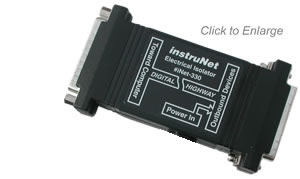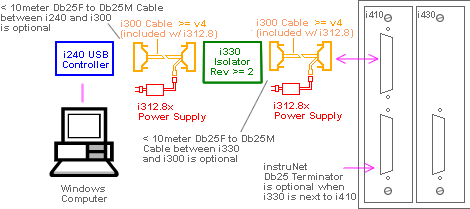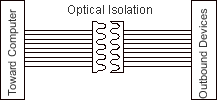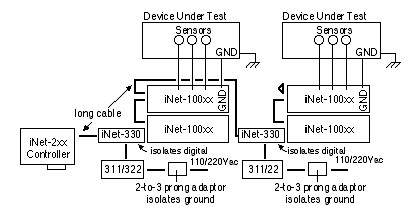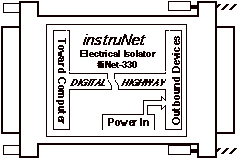MODEL i330 INSTRUNET
The Model 330 optical-isolator manufactured before November 2010 is referred to as "i330 Revision 1". It is identical to the newer Revision 2, described below, except power is cabled differently. For details on the older Rev 1, click here.
Typical Isolated system with i240 USB controller
Model 330 Electrical Isolator Block Diagram
Break Ground Loops and Reduce High Frequecies between Grounds with the i330
Isolating From Earth Ground
Slower Speeds Further Reading Getting Started
Compatibility Troubleshooting the i330 Wild Grounds Troubleshooting |
